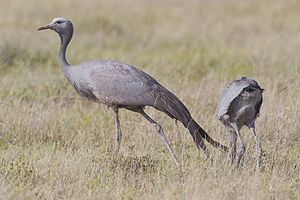National animals of South Africa
National symbols are representations of a country's identity and values[1].
All Scouts promise to do their duty to their country. When preparing to become a Scout, Recruits are required to:
- recognise the national animal, flower and Coat of Arms.
National animal of South Africa
The national animal of South Africa is the springbok. In Scouting, the Springbok Scout Award is the top award that a South African Scout can earn. It is also the name of the South African rugby team.
The springbok (Antidorcas marsupialis) gets its common name from its characteristic jumping display - pronk in Afrikaans. The animal stands 75cm high and weigh about 40kg. Both sexes have horns, but those of the ram are thicker and rougher. The species has adapted to dry, barren areas and open grass plains, and so is found in the Free State, North West and Karoo up to the west coast. They move in small herds during winter, but often crowd together in bigger herds in summer.
National bird of South Africa
The national bird of South Africa is the Blue Crane (Grus paradisia), which occurs almost entirely in South Africa. Standing about a metre tall, the bird is a light blue-grey, with a long neck supporting a rather bulbous head, long legs and elegant wing plumes which sweep to the ground. Blue cranes lay their eggs in the bare veld, often close to water. They are common in the Karoo, but are also seen in the grasslands of KwaZulu-Natal and the highveld, usually in pairs or small family parties. Although usually quiet, the blue crane can emit a distinctive high-pitched and rattling croak which can be heard from some distance.
National fish of South Africa
South Africa's national fish is the Galjoen (Dichistius capensis), which is only found along the South African coast. It keeps to mostly shallow water, often found in rough surf and sometimes right next to the shore, and is known to every angler as a game fighter. Near rocks, the colour of the galjoen is almost completely black, while in sandy areas the colour is silver-bronze.
- Information about the galjoen at the Two Oceans Aquarium
See also
- National symbols
- For more information on national symbols, see Brand South Africa's article on national symbols
- ↑ Wikipedia article on national symbols


